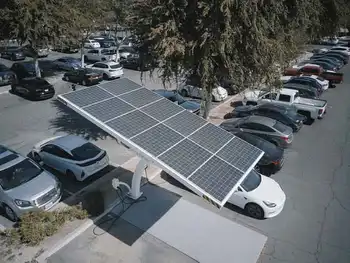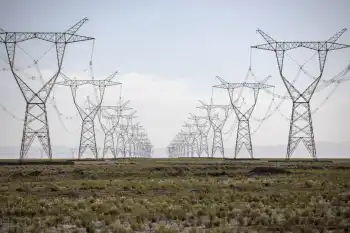Oklahoma coal plants told to “clean up”
By Reuters
Protective Relay Training - Basic
Our customized live online or in‑person group training can be delivered to your staff at your location.

- Live Online
- 12 hours Instructor-led
- Group Training Available
The EPA acted because the state's plan did not adequately reduce sulfur dioxide SO2 emissions enough to meet the regional haze requirements under the Clean Air Act.
AEP spokesman Stan Whiteford said, "We're disappointed the federal EPA did not go along with the state implementation plan, which was carefully designed to provide flexibility to develop reasonable and cost effective approaches that meet the objectives of the environmental rules."
Whiteford said AEP has had lots of experience installing scrubbers at its eastern coal plants and estimated it could cost $700 million and take about five years to design, engineer, permit and install new SO2 scrubbers on the two units at its Northeastern plant.
The EPA however only gave the utilities three years to add the scrubbers, switch to natural gas or use a combination of these approaches.
The EPA wants OG&E Corp to clean up the 477-megawatt Unit 4 the 517-MW and 5 at the Muskogee plant and the 522-MW Unit 1 and 524-MW Unit 2 at the Sooner plant. American Electric Power Co Inc is to clean up the 460-MW Units 3 and 4 at its Northeastern plant.
The units provide enough low cost, baseload power for more than 2.3 million homes.
AEP's Whiteford could not say whether AEP would install the scrubbers. He said AEP's next move was to look at the EPA proposal and prepare for the public meeting on April 13 in Oklahoma City.
Officials at OG&E were not immediately available.
The EPA proposal brought immediate criticism from Senator Jim Inhofe R-Oklahoma, ranking member of the Senate Committee on Environment and Public Works.
"State officials... did the right thing... but that was too much for the Obama EPA, which rejected the Oklahoma-led plan in favor of their preferred scheme to put Washington bureaucrats in charge and... make fossil-fuel-based electricity more expensive for consumers," Inhofe said in a statement.
"Through my leadership position on the Senate Committee on Environment and Public Works, I will do everything I can to work with Oklahoma officials to protect consumers from EPA's attack on affordable electricity," the senator said.
The EPA said it acted because Oklahoma's state implementation plan SIP did not adequately address Clean Air Act requirements. The Clean Air Act of 1990 requires states to control emissions that cause air haze.
The EPA said all other sources of air pollution in Oklahoma except the three coal plants would meet the level of control needed to address the Clean Air Act requirements.
This was not the first time the EPA denied a state implementation plan.
In December, the EPA told PNM Resources Inc to clean up its 1,643-MW San Juan coal plant in New Mexico.











